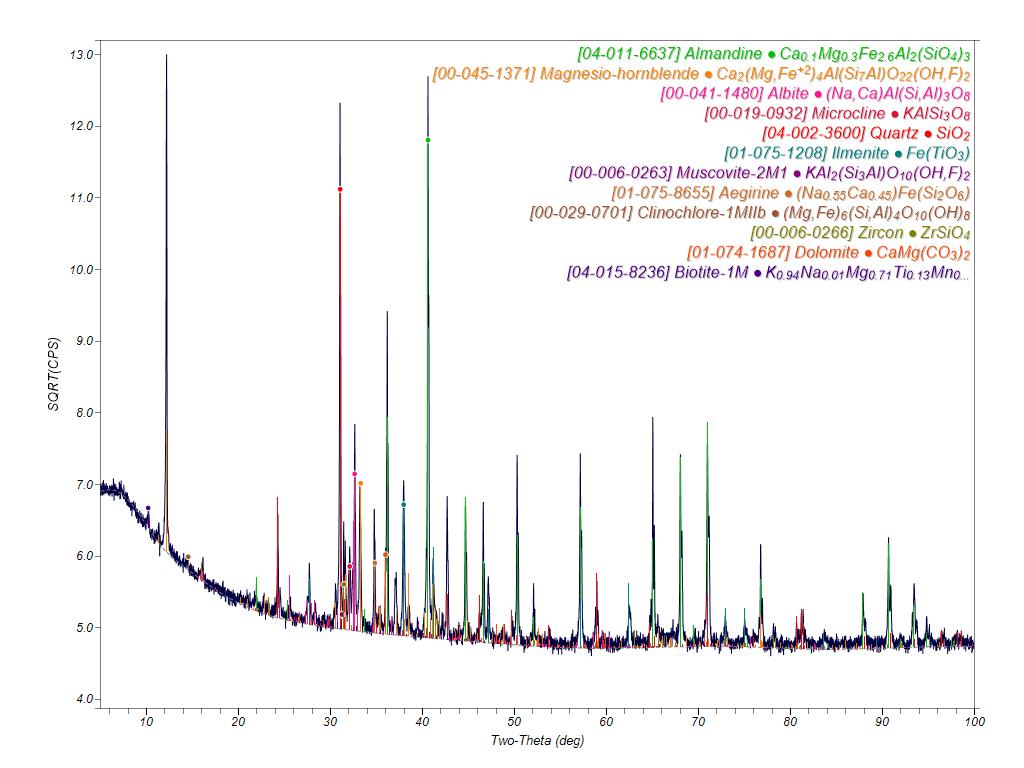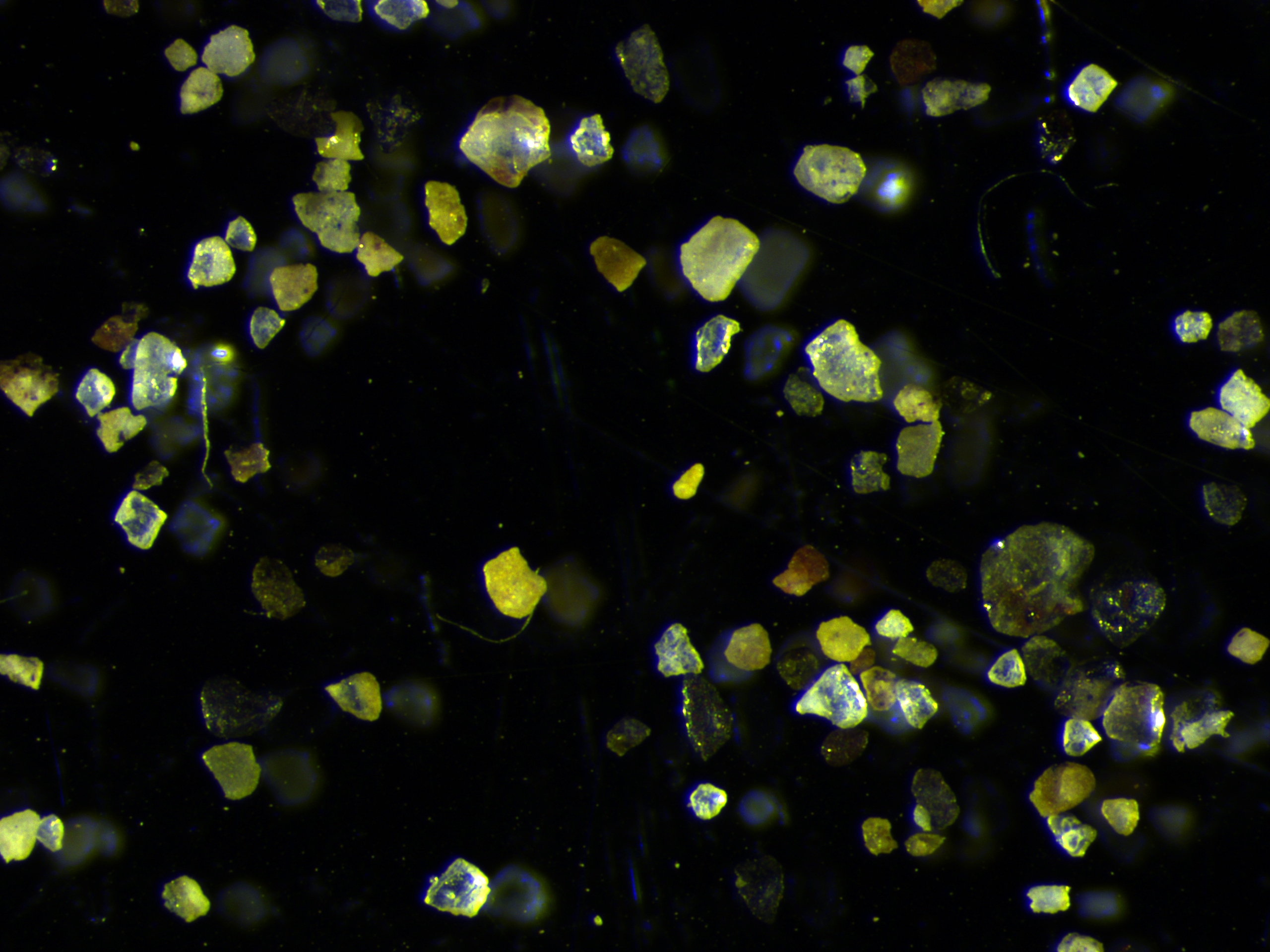MicroXRD: Small Area Analysis of Single Grains of Sand
Home » MicroXRD: Small Area Analysis of Single Grains of Sand
MicroXRD can help you solve challenging problems that require the analysis of small areas or volumes.
Lately, we’ve been thinking a lot about beach sand. While your image may be of a beautiful white beach that is likely composed of either quartz (SiO2) or two polymorphs of calcium carbonate (CaCO3) depending on whether the sand was produced by the ocean pulverizing granite or a big pile of seashells, a lot of beaches are much more heterogeneous.
The image to the right is a microscope image of some sand taken from a beach where the source of the sand is weathered volcanic rock. As you can see, there are a wide variety of shapes and sizes of sand grains. As bulk samples, diffraction patterns from sands like these can be very complex.

Few, if any people reading this application note have any need to identify the mineralogy of individual grains of sand; but there are many scientific and technology-based applications where you might want to identify the crystalline material in a very small area or volume. For example, microdiffraction can be used to identify crystalline inclusions in glass, look at film texture in a test pad on an integrated circuit, identify a single particle found in an air filter, or to identify the phosphor used in an LED.
Would you like to learn more about MicroXRD?
Contact us today for your MicroXRD needs. Please complete the form below to have an EAG expert contact you.
